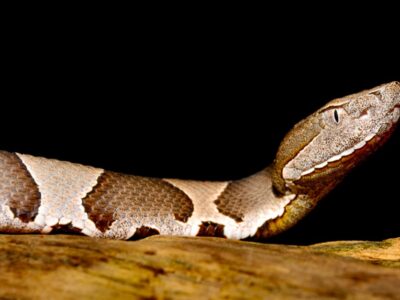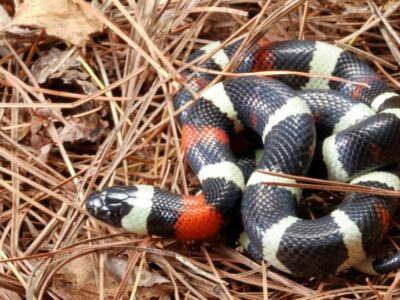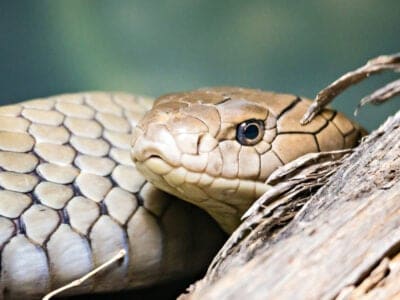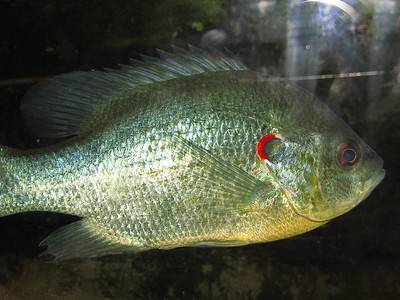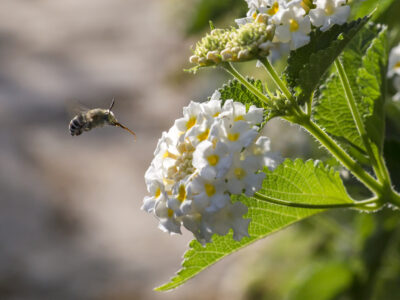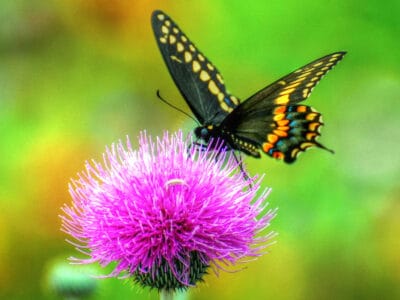South Carolina is a smallish state, but with three geographic regions, mild winters, and hot and humid summers, it is a paradise for all kinds of wildlife, from small rodents to badgers, mink, spiders, long-tailed weasels, birds, reptiles, amphibians, and insects.
The state is home to animals strange and pedestrian, predators, and herbivores, some of the country’s rarest animals, and those seen and heard every day. Here are only a few of the fantastic beasts of South Carolina and where to find them:
The Official Animal of South Carolina
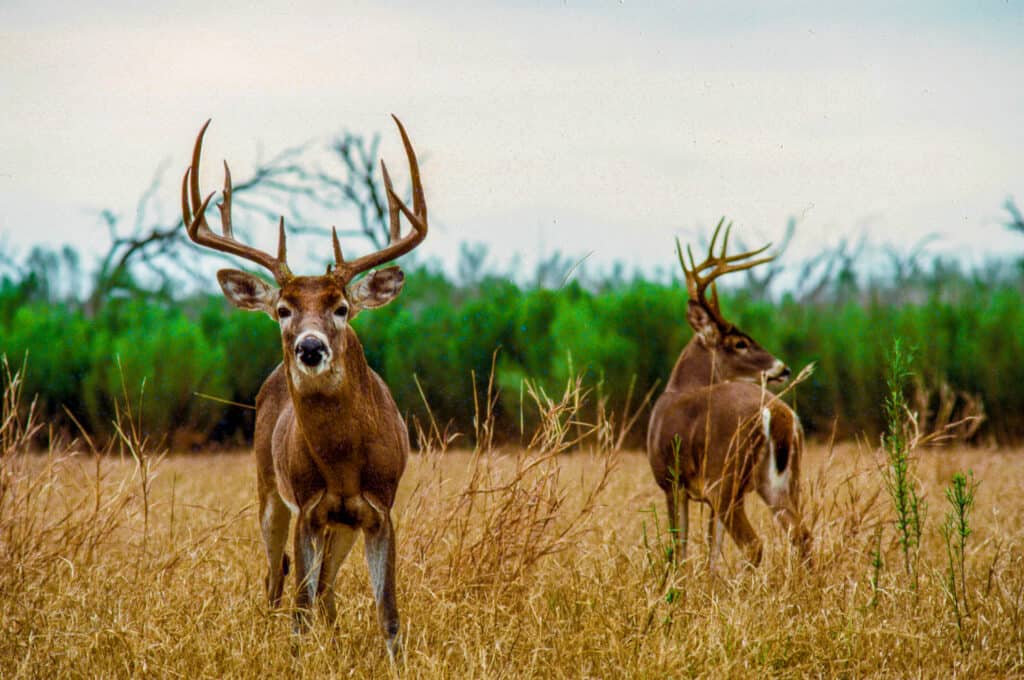
deer, trophy,
antler
, animal, antler, white-tailed deer, wildlife, majestic, game, season, hunting, ranch, deer lease. The official state animal of South Carolina is the white-tailed deer.
©iStock.com/Dan Richards
The official state animal of South Carolina is the white-tailed deer, which, to be blunt, is found absolutely everywhere in the state. In 1972, through Act Number 1335, the Whitetail Deer was chosen as the State Animal.
During the summer season, the white-tailed deer’s back and sides are covered with reddish fur, while its underside is white. However, in winter, its upper regions change to a grayish color.
In summer, the white-tailed deer has a reddish pelage, or fur, on its back and sides and is whitish beneath. In winter the upper parts turn greyish.
With a height of around 3-4 feet and weighing approximately 90-300 lbs, these animals hold the title of Official Animal of South Carolina.
Official state bird
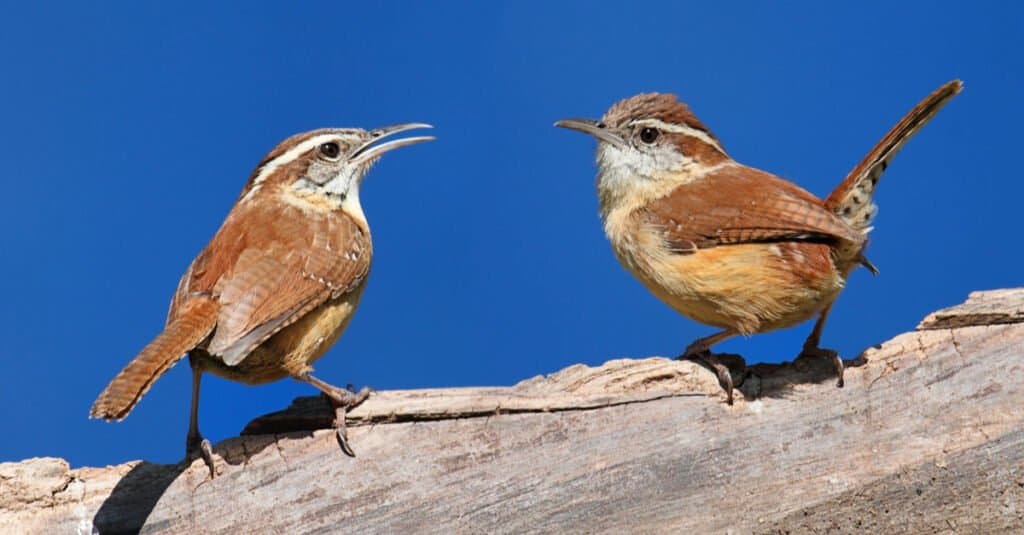
It is harder for a female Carolina wren to defend her territory without a mate.
©Steve Byland/Shutterstock.com
South Carolina’s official state bird is the Carolina wren, an aggressive little bird with a loud and confident voice. The state wild game bird is the wild turkey, which, like the white-tailed deer, is widespread. South Carolina’s state duck is the wood duck, which is also called the Carolina duck.
The Great Carolina Wren, which is also known as the Carolina Wren, was selected as the official state bird of South Carolina in 1948, taking the place of the Mockingbird.
Official state marine mammal
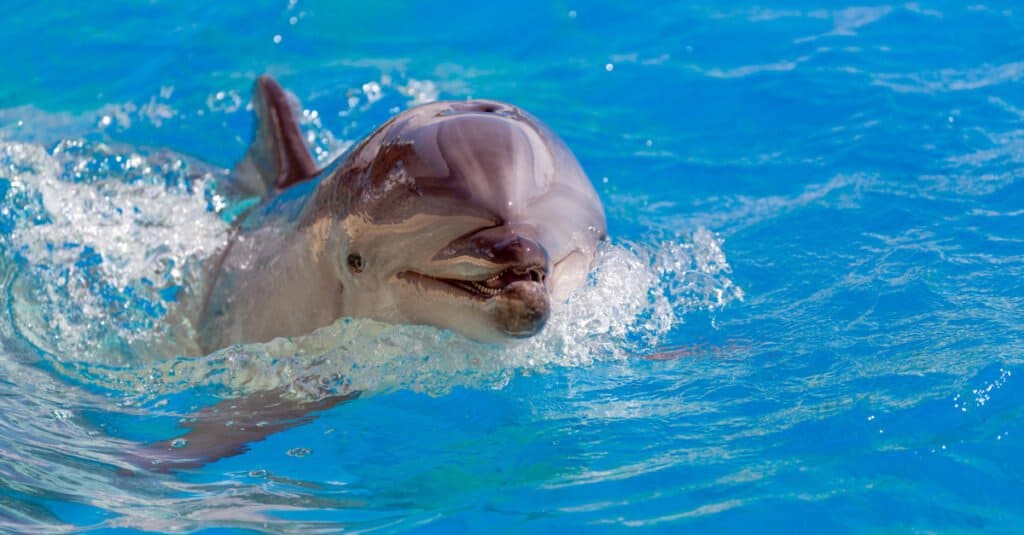
Dolphins attach a sponge to their noses and use it to protect their flesh while foraging for food.
©iStock.com/Lefteris_
The bottlenose dolphin is commonly seen off the coast of the state. The official migratory marine mammal is the northern right whale, which comes to the coastal waters to give birth.
Bottlenose dolphins are renowned for their fun-loving demeanor and frequently demonstrate their exuberance by surfing and leaping through the ocean’s waves.
Bottlenose dolphins have incredibly advanced brains making up of two different brains, which are among the largest in the animal kingdom, relative to their body size. They have a level of intelligence that is comparable to that of humans, with the ability to communicate, learn, and problem-solve.
The brain of a bottlenose dolphin is particularly well-developed in areas that are associated with emotions, social behavior, and intelligence.
Largest Animals Found in South Carolina
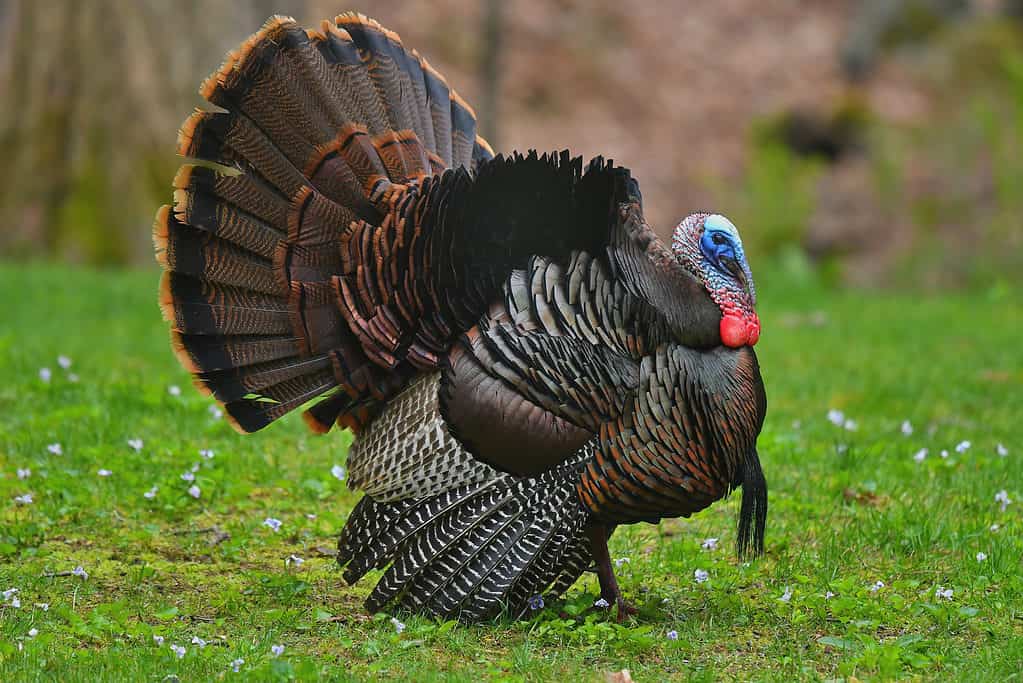
Turkeys can see better than humans and are found in South Carolina.
©iStock.com/Robert Winkler
South Carolina is home to a diverse array of wildlife, from tiny insects to massive marine mammals. Among the state’s fauna, some of the largest animals are found, ranging from land-based mammals to sea creatures.
These magnificent creatures play a crucial role in South Carolina’s ecology, contributing to the state’s biodiversity and serving as flagship species for conservation efforts.
Here are some of the largest animals found in South Carolina:
- American black bear
- White-tailed deer
- Eastern wild turkey
- Alligator snapping turtle
- Bobcat
- Cougar (mountain lion)
- Humpback whale
- Common bottlenose dolphin
- Fin whale
- Bryde’s whale
The Rarest Animal Found in South Carolina
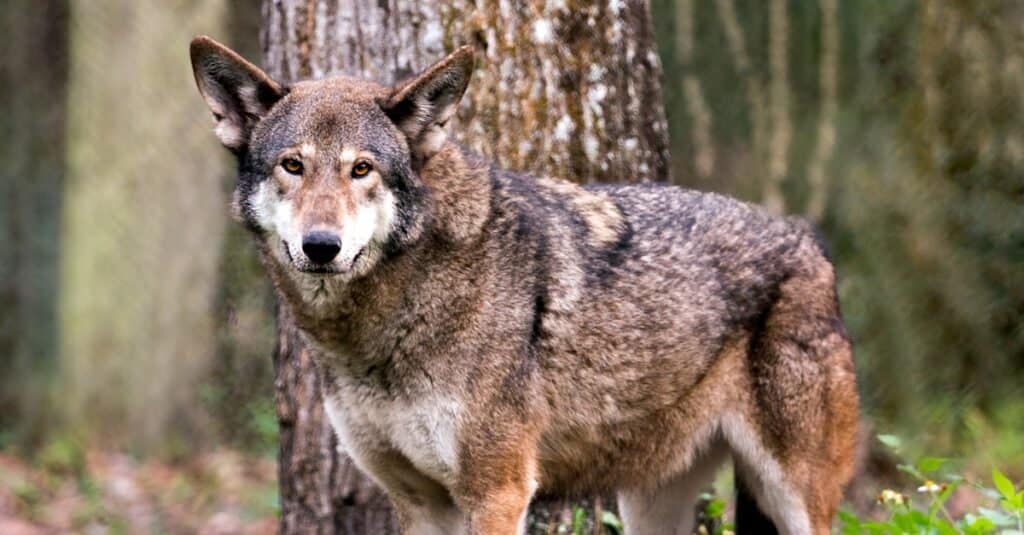
The Red Wolf is critically endangered according to the IUCN Red List. It is one of the rarest animals in South Carolina.
©Rejean Bedard/Shutterstock.com
South Carolina is home to a diverse range of animal species, but some are far rarer than others. These rare animals, facing numerous threats such as habitat loss and fragmentation, poaching, and climate change, require special conservation efforts to ensure their survival.
With that said, here’s a list of the rarest animals found in South Carolina:
- Eastern Cougar
- Gopher Tortoise
- Indiana Bat
- West-Indian Manatee
- Red wolf
- Wood stork
- Carolina northern flying squirrel
- Bald eagle
- Shortnose sturgeon
- American alligator
- Eastern indigo snake
- Oconee bell
- Carolina heelsplitter
- Red-cockaded woodpecker
Where To Find The Top Wild Animals in South Carolina
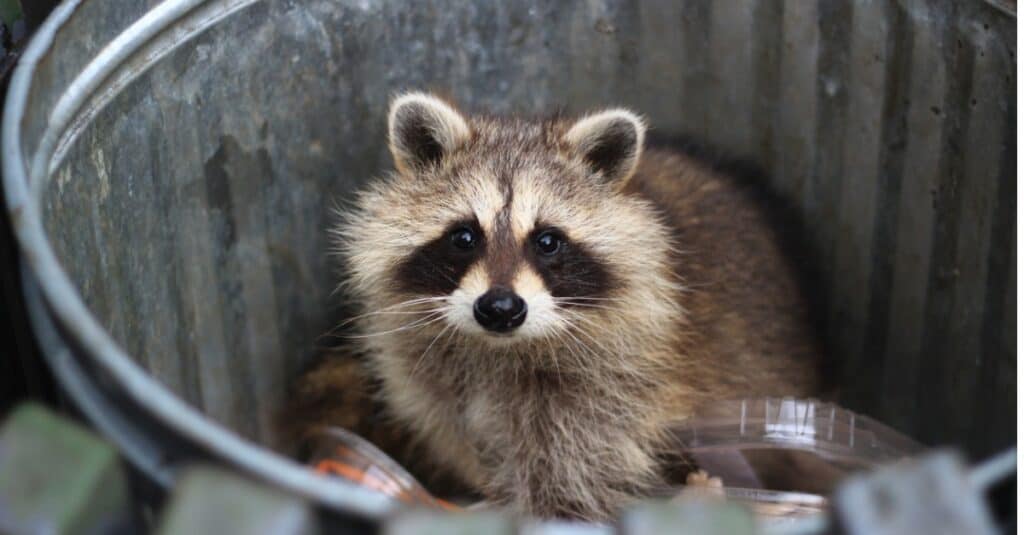
Raccoons love to find food in trashcans so having a trashcan with a locking lid can be helpful in keeping them away. They are common in South Carolina.
©iStock.com/Dahrs
A citizen of the state won’t need to travel far to experience South Carolina’s wildlife. All manner of birds, opossums, raccoons, skunks, wild hogs, and white-tailed deer are frequent visitors to farms and backyards.
However, South Carolina does have 47 state parks that cover 9000 acres from the southern coast to the mountains. In these parks, the visitor can glimpse the less common animals such as the badger, the mink, alligators, and the long-tailed weasel.
Among the state and national parks is Table Rock State Park in Pickens County where people can fish for the state fish, the striped bass as well as catfish, trout, and bream at Pinnacle Lake and Lake Oolenoy. Other areas are Caesars Head State Park, where visitors can find black bears, try to get a glimpse of the endangered green salamander, and fish for trout in the rivers.
Found only 18 miles from Columbia, the state capital, Congaree National Park is home to feral pigs, otters, bobcats, and armadillos. Its waters hold many species of fish, including catfish. Other sites are Kings Mountain State Park and Paris Mountain State Park, with their many varieties of birds and fish.
Hunting Island State Park is a barrier island that’s home to alligators, deer, diamondback rattlesnakes, and many types of fish, including barracuda. It is where the rare loggerhead turtle hauls out to dig nests in the sand and lay eggs.
Marine Mammals
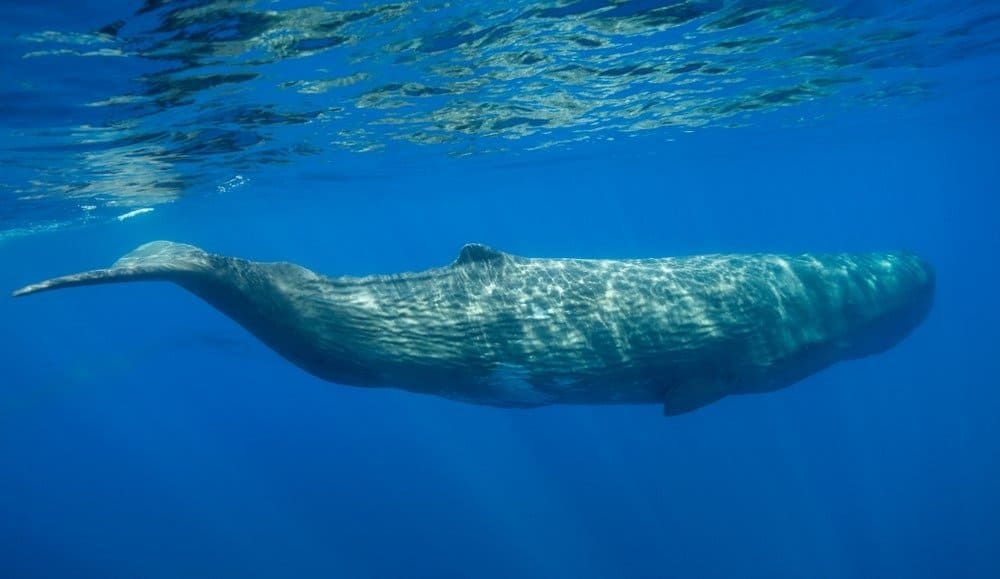
Male sperm whale swimming, Ligurian Sea, Pelagos Sanctuary, Mediterranean, Italy.
©wildestanimal/Shutterstock.com
Besides the bottlenose dolphin and the right northern whale that visits seasonally, marine mammals found off South Carolina’s coasts include the minke, sei, bowhead, fin, and humpback whales. Other marine mammals are the goose-beaked whale, the sperm whale, the harbor seal, the harbor porpoise, and other types of dolphins, beaked whales, and pilot whales.
The West Indian manatee, a strange and peaceable creature somewhere between a walrus and a dolphin, is also found off South Carolina.
Canines
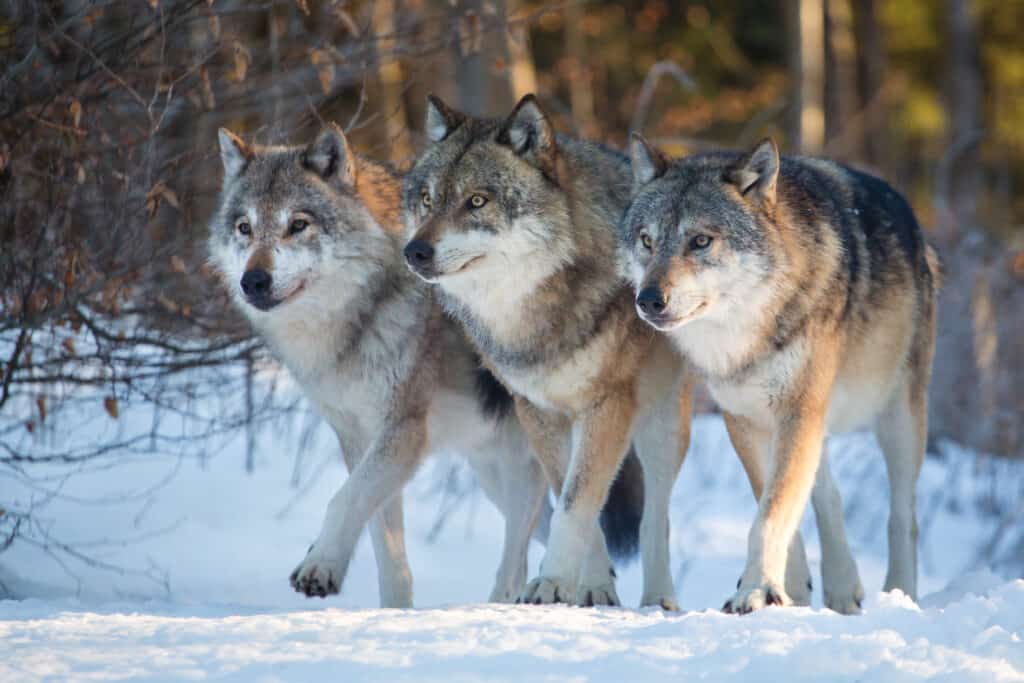
There are two species of wolves in the world; the red wolf and the gray wolf.
©David Dirga/Shutterstock.com
Though the gray wolf seems to have been extirpated from the state, some claim that the red wolf can still be found in South Carolina’s forests. Some also claim that this canine is actually a cross between a wolf and a coyote. If it is still found in South Carolina, it must be the rarest of canines, and its status is critically endangered.
Canines that are not endangered are the grey fox and the red fox, which are also visitors to people’s yards. The coyote has also made its way into South Carolina as it has into other parts of North America.
Bats
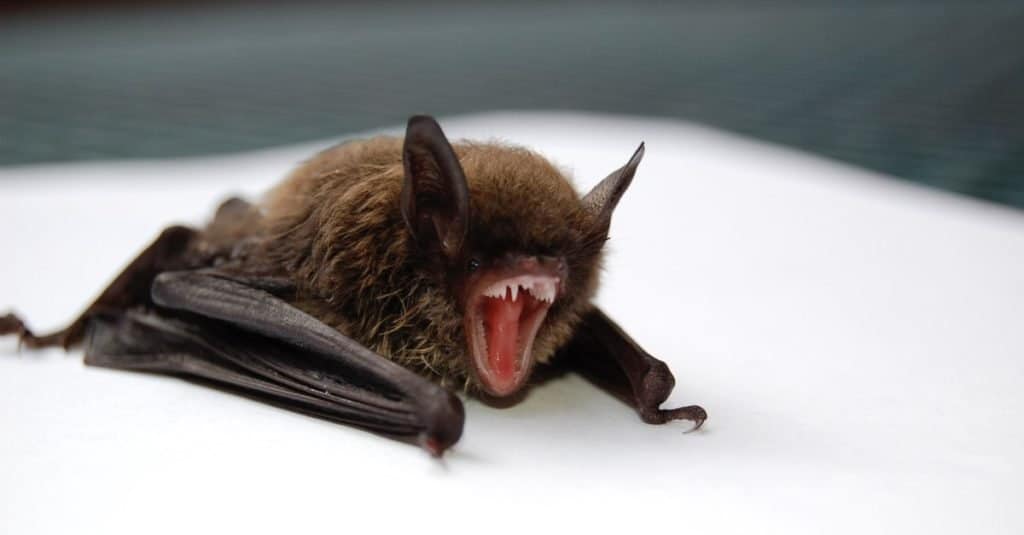
Close-up of Little Brown Bat.
©Daily-Images/Shutterstock.com
Though people are wary of bats, they perform an important role in the ecosystem by eating mosquitoes and other insect pests such as cockroaches, Japanese beetles, leafhoppers, and cucumber beetles. Among the bats found in South Carolina are the big brown bat, the little brown bat, the evening bat, the eastern pipistrelle, and the hoary bat. Bats often roost in caves or in people’s attics or barns.
Rabbits
Rabbits found in South Carolina are the eastern cottontail, one of the most commonly seen rabbits, the swamp rabbit, and the marsh rabbit.
Rabbits are highly sociable animals that typically live in groups. The naming conventions for the different genders and age groups of rabbits are as follows: a baby rabbit is referred to as a kit, a female is called a doe, and a male is called a buck. One interesting fact about rabbits is that their teeth never stop growing, which is why they must constantly chew on things to keep them trimmed down.
Finally, when rabbits are feeling happy, they perform a distinctive athletic leap called a “binky”, which involves mid-air twists and kicks, showcasing their exuberant personality.
Big Cats
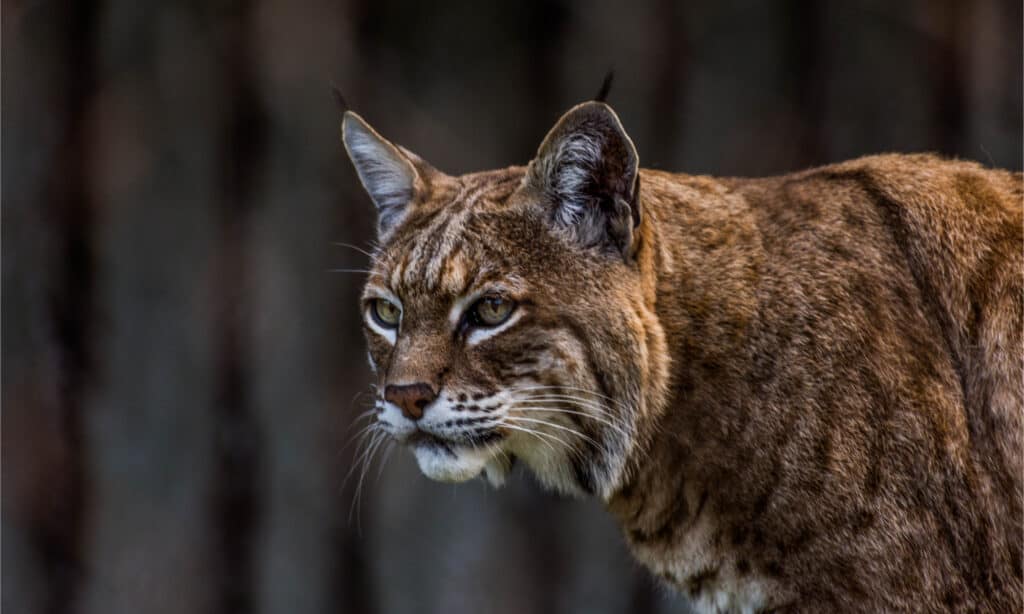
Bobcats are cute, wild, and yet ferocious medium-sized cats that live just about anywhere in North America.
©Victor Arita/Shutterstock.com
The bobcat is South Carolina’s only extant big cat. The cougar was extirpated from the state, and its subspecies, the eastern cougar is extinct.
Although they may appear endearing and snuggly, bobcats are formidable predators that inhabit various regions across North America. These animals possess the ability to pounce up to a distance of 12 feet to capture prey and have demonstrated the ability to hunt considerably larger animals, including young deer.
With a body size that is approximately double that of a domestic cat, the bobcat is significantly swifter and more agile than its domesticated counterpart.
Rodents
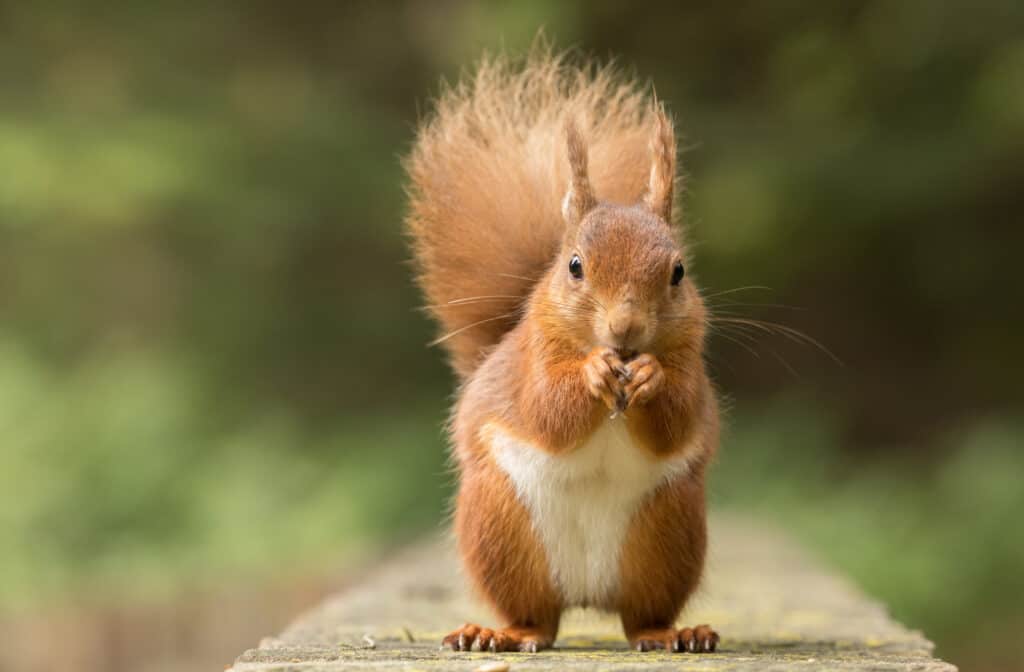
The state is also home to several species of squirrels, including the groundhog, the eastern
chipmunk
, and the southern flying squirrel.
©Andrew Swinbank/Shutterstock.com
South Carolina also has a wealth of rodents, many of whom do find their way into buildings. They include the house mouse, which is common to the point of ubiquity even though it is not native to the state. Other rodents are more species of mice, including jumping mice, the black, Norway, hispid cotton and marsh rice rats, the muskrat, and voles.
The state is also home to several species of squirrels, including the groundhog, the eastern chipmunk, and the southern flying squirrel. Beavers build their dams and lodges in South Carolina’s ponds, streams, and swamps.
Shrews
Though shrews aren’t rodents, they are mouse-sized creatures with long, pointed snouts. Among the shrews that populate South Carolina are the common or cinereus shrew, the least shrew, the southern and northern short-tailed shrews, and the tiny American pygmy shrew.
Shrews are recognized as the fourth most prosperous family of mammals globally. During the winter season, shrews may experience a reduction in weight of up to 40%, which can cause them to contract to the extent of their bones and organs.
The pygmy shrew, which is the smallest mammal in North America, and the second-smallest mammal in the world, is also a type of shrew.
Black Bears
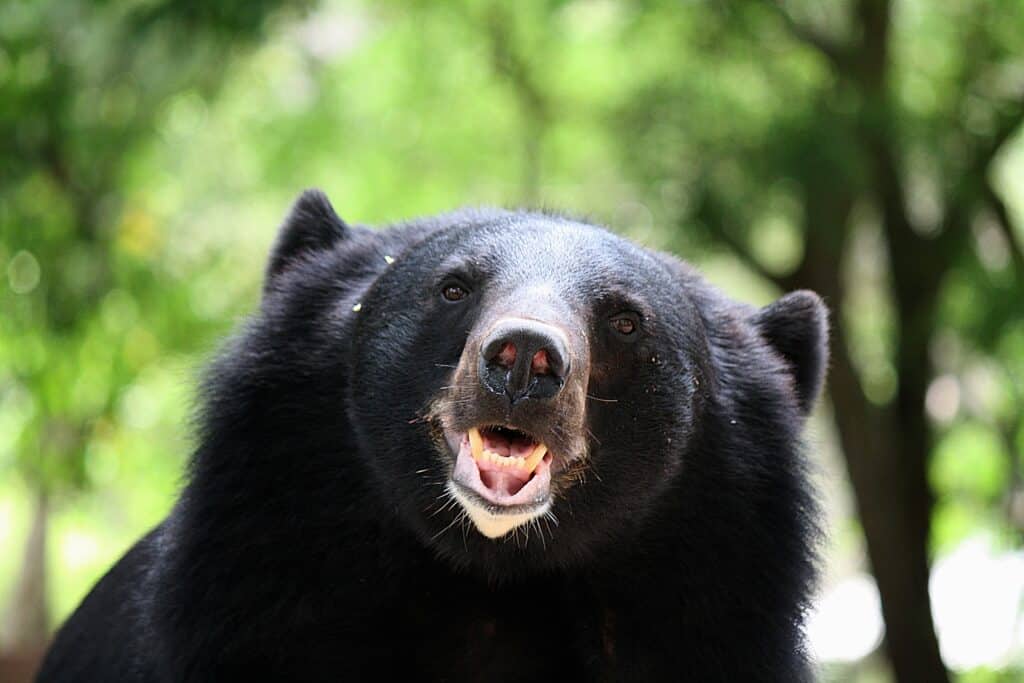
The black bear has stable populations in the northwest and the southeast parts of South Carolina.
©SamiPu/Shutterstock.com
The black bear has stable populations in the northwest and the southeast parts of the state, and it at least passes through every other county. The only county where the black bear hasn’t been seen in Bamberg County.
Black bears are highly adaptable creatures that possess few natural predators. These animals are typically around the same size as humans and are known for their solitary behavior. Black bears are excellent at adapting to their surroundings, and they give birth before emerging from hibernation.
During hibernation, bears can lose up to half of their body fat. Furthermore, bears are not picky eaters and rarely decline a snack, as they require a significant amount of food to maintain their large body size.
Opossum
The opossum is the only marsupial in North America, and it is found just about everywhere in the state. It is not above raiding people’s garbage cans and building nests in the ductwork.
Opossums and possums are often confused, but they are not the same animal. Opossums are the only marsupials found north of Mexico, and they have no control over when they play dead. They emit a repulsive odor when they do so.
Opossums are also helpful in slowing the spread of Lyme disease and have remarkable memory. Additionally, they are immune to most snake venom.
Mustelids
Mustelids in South Carolina include the mink, the long-tailed weasel, and the river otter. Minks are found in the upper Piedmont region and down in the marshes along the coast, and there are populations all through the rest of South Carolina.
The long-tailed weasel prefers the borders between the woods and fields, of which there are many in South Carolina. Though it’s not especially common, it has been implicated in raiding henhouses.
The river otter is found in the state’s coastal marshes and swamps, around beaver ponds and refuges for waterbirds.
Badgers, which are relatives of weasels, are also found in South Carolina. More robustly built than their cousins, badgers dig burrows called setts. A family of badgers is called a site.
Armadillo
Another strange and fascinating creature is the nine-banded armadillo. Not native to the state, it has made its way north from South America. Females always give birth to identical quadruplets and both sexes jump 3 or 4 feet straight into the air when they’re startled.
Armadillos can live for up to 20 years and typically give birth once a year, producing either a litter of four males or four females. It is commonly believed that all armadillos can roll themselves into a ball, but only two species, the Brazilian armadillo and the southern three-banded armadillo, have this ability.
Birds
South Carolina is a haven for all sorts of birds, from seagulls, terns, skimmers, and pelicans as well as birds that scurry along the shore in search of food such as plovers and oystercatchers.
Birds found in South Carolina’s wetlands include rails, gallinules, bitterns, and grebes. Some wading birds are egrets, spoonbills, herons and ibises, and the endangered wood stork. Birds of prey include bald eagles, ospreys, kestrels, owls, hawks, falcons, and kites. Other birds are bluejays, robins, cardinals, kingfishers, cedar waxwings, crows, bluebirds, thrashers, chickadees, chimney swifts, phoebes, and many others.
Reptiles
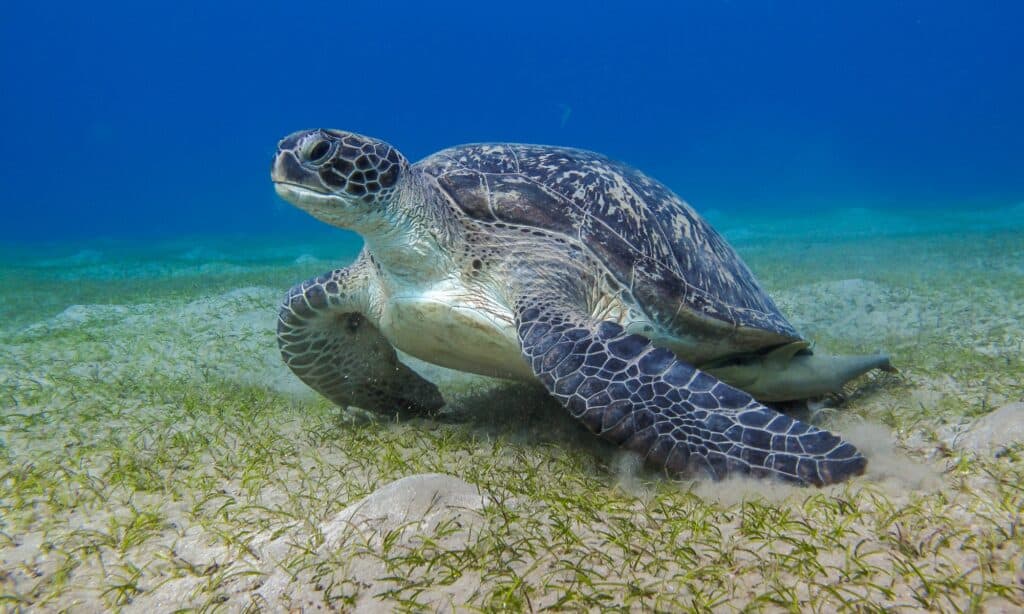
Leatherback sea turtles are found along the South Carolina coast.
©iStock.com/YasserBadr_Beenthere
The number of reptile species in South Carolina is also vast. The largest is the alligator, which lives in the state’s freshwater or brackish ponds, streams, rivers, and swamps. They are easy to find in the Savannah River and its tributaries. An adult male can grow to 15 feet long and weigh close to 1000 pounds.
The more humble reptiles include anoles, which live around human habitation and can change their color from brown to leaf green. There are skinks, fence lizards, horned lizards and geckos, glass lizards, and race runners. Snakes include garter snakes, water snakes, black snakes, rat and corn snakes, venomous rattlesnakes, cottonmouths, coral snakes, and copperheads.
Besides the loggerhead turtle, South Carolina is home to the leatherback sea turtle, the diamondback terrapin, the gopher tortoise, and species of freshwater turtles including the chicken turtle, the bog turtle, the common map turtle, the river and Florida cooters, and the mud turtles.
Amphibians
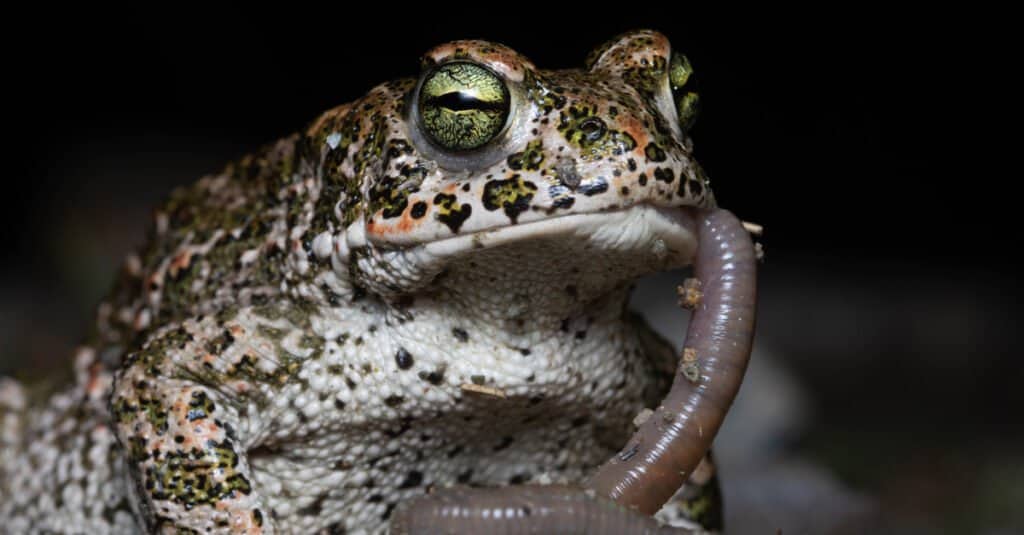
Natterjack Toad eating
earthworms
.
©Laura Ojalvo Ortega/Shutterstock.com
South Carolina amphibians include all types of frogs and toads including the American toad, the southern and northern cricket frogs, the bird-voiced tree frog, the squirrel tree frog, the bullfrog, the gopher frog, and the eastern spadefoot toad. There’s also the little grass frog and the spring peeper.
Salamanders are more elusive than frogs and toads, as their voices, if they have voices, are quiet, and they live in moist places under rocks and leaves. Among them is the two-toed amphiuma, or the congo eel, which can be 4 feet long. South Carolina also contains sirens, mudpuppies, Alabama waterdogs, and hellbenders.
Insects
Like other warm places, much of South Carolina’s wildlife is made up of insects. Among the least welcome are the fire ants, Palmetto bugs, bed bugs, cockroaches, termites, mosquitoes, weevils, scarab beetles and aphids, horseflies, and deerflies.
Among the insects that are tolerated if not welcomed are butterflies, the prettier species of moth such as the luna moth, bumblebees, honey bees, ladybugs, and dragonflies such as the azure blue, and fireflies.
Other Arachnids
The Carolina wolf spider is the state spider, and South Carolina has other tiny predators such as jumping spiders, crab spiders, cellar spiders, nursery web spiders, fishing spiders, orb weavers, and green lynx spiders.
Zoos in South Carolina
Some of the zoos in South Carolina include Charles Towne Landing, which recreates the conditions of Charleston when it was still an English settlement. Because of that, visitors can see bison, river otters, wood storks, and other wading birds. Columbia’s River Banks Zoo is also a favorite, as is the Greenville Zoo.
Wild Animals in South Carolina
More wild animals found in South Carolina include native arachnids such as pillbugs, ticks, centipedes, millipedes, harvestmen, scorpions, and pseudoscorpions. Other common insects are wasps, hornets, treehoppers, grasshoppers, crickets, katydids, and beetles, including the Hercules beetle. The common and alligator snapping turtles are also found in South Carolina, and the black vulture and the turkey vulture feast on carrion, including the always plentiful roadkill. Amphibians include the seepage salamander, the marbled salamander, the southern zigzag salamander, and the red-spotted newt.
The Most Dangerous Animals In South Carolina Today
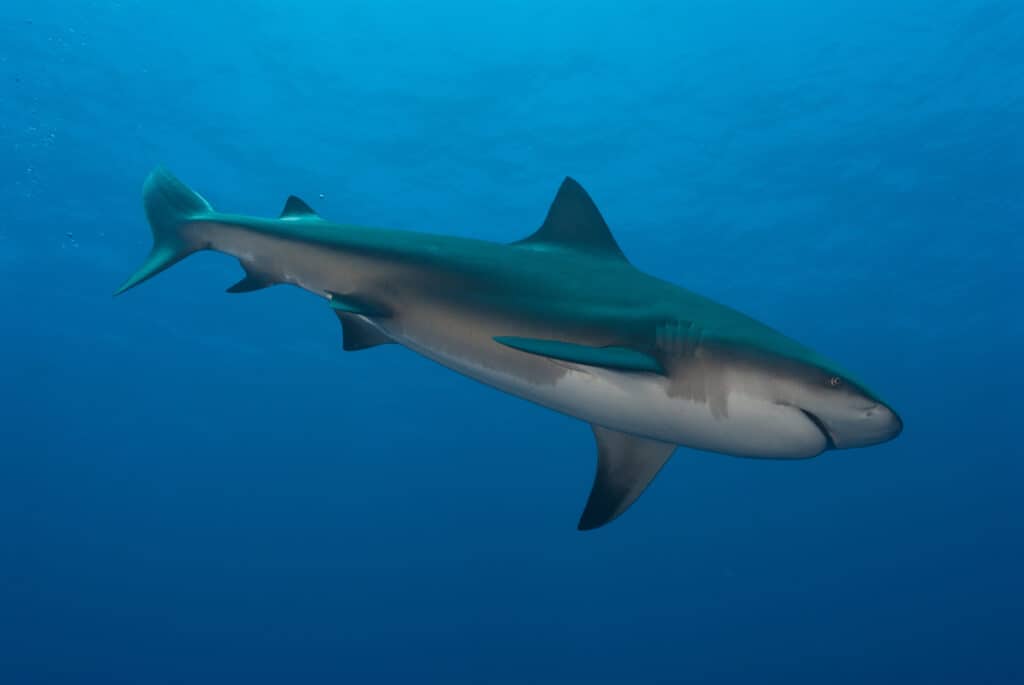
Bull sharks are found on the coast of South Carolina.
©Fiona Ayerst/Shutterstock.com
Since South Carolina is home to so many creatures, it is inevitable that some are going to be dangerous to humans. The most dangerous include:
- Sharks – Bull sharks and great white sharks are found in the waters off the state’s beaches. Though humans aren’t the favorite food of these predators and they tend to spit them out after one bite, it only takes one bite to cause serious injury.
- Black Bears – Black bears aren’t as aggressive as grizzlies, but it is best to watch them from a safe distance. Mother bears are especially protective of their cubs.
- Copperhead snakes – The problem with the copperhead snake is that it’s active during the day in the fall, and its coloration makes it well camouflaged among fallen leaves. It is easy for a person wearing sandals or no footwear at all to step on one and get bitten. You can read about the venomous snakes of South Carolina.
- Wasps, Hornets, and Bees – Though people tend to overlook them, these insects cause more deaths than just about any other dangerous animal. A hive of angry stinging bees or wasps can kill someone allergic to their venom.
- Deer – People may be surprised to learn that the timid white-tailed deer is a dangerous animal. A deer can cause a shocking amount of damage to both cars and passengers if a vehicle hits it on a country road.
Endangered Animals In South Carolina
Besides the loggerhead sea turtle and the green salamander, endangered animals in South Carolina include:
- Shortnose sturgeon – This prehistoric fish is endangered due to overhunting for both its eggs and its meat.
- Carolina heel splitter – This is a type of mussel threatened by pollution and habitat destruction.
- Pine Barrens tree frog – This beautiful little frog from the wetlands is endangered due to development, pollution, and fire suppression.
- North Atlantic Right Whale – South Carolina’s state migratory marine mammal has still not recovered from overhunting in the 19th and early 20th centuries.
Check out more endangered animals living in South Carolina.
Snakes in South Carolina
South Carolina is home to 38 different species of snakes. Some common snakes in the state include the corn snake, black racer, rat snake, mud snake, and ribbon snake. In addition, there are six species of water snakes (which are non-venomous) and 6 species of venomous snakes in the state. Venomous snakes in South Carolina include cottonmouth snakes, timber rattlesnakes, coral snakes, and copperheads.
Native Plants in South Carolina
Trees are an integral part of the landscape in South Carolina and can be seen in almost every corner of the state. They serve as important environmental resources by reducing air pollution through photosynthesis, protecting soil from erosion, and providing habitat for wildlife. Some South Carolina native tree species include cabbage palmetto, American beech, and river birch, among others.
In general, hundreds of plant species call South Carolina their home. Some native plants in South Carolina include pawpaw, foamflower, and black cohosh, among others.
State Seal of South Carolina
The South Carolina state seal recognizes its vegetation and landscape while paying tribute to its history. The seal displays two ellipses within a larger circle framed by palmetto tree branches. Palmetto trees are found across the state and have led to the state’s nickname of the Palmetto State.
The left oval showcases the palmetto tree with a fallen oak tree representing a battle fought in South Carolina during the revolutionary war at Sullivan’s Island. Below the motto “Animis Opibusque Parati” is displayed which translated means “Prepared in Mind and Resources.”
The right oval presents the Roman goddess of hope, Spes, holding a laurel branch with weapons under her feet. Above Spes is the motto “Dum Spiro Spero” which means “While I Breathe I Hope.”
More Articles About South Carolina
- Discover the South Carolina town with the state’s worst air quality
- Discover the rainiest place in South Carolina
South Carolinian Animals
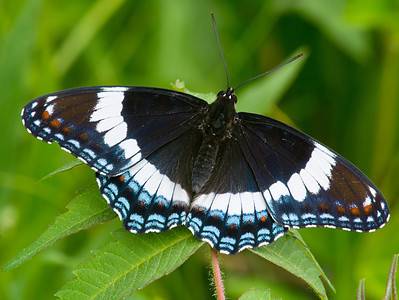
Admiral Butterfly
Stunningly beautiful wings
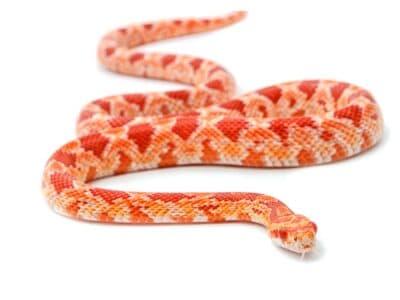
Albino (Amelanistic) Corn Snake
Albino corn snakes make great beginner snakes.
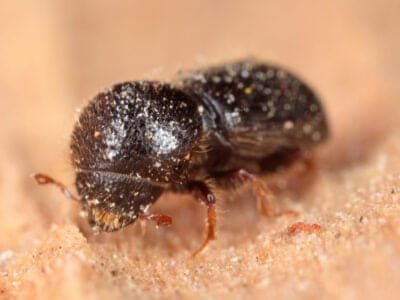
Ambrosia Beetle
The ambrosia beetle forms a symbiotic relationship with the ambrosia fungi
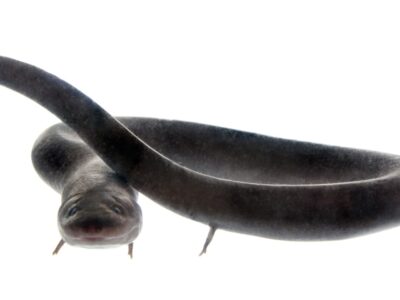
American Eel
Don't eat raw eel! Their blood is poisonous to humans when consumed raw.
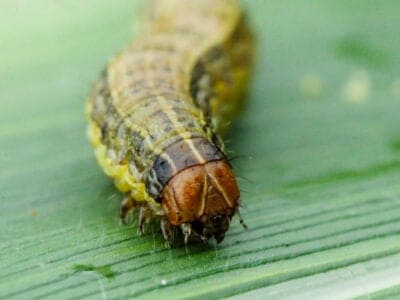
Armyworm
They are so named because they "march" in armies of worms from one crop to another in search of food
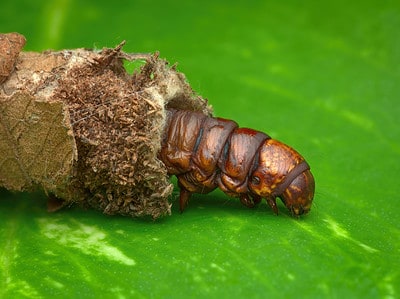
Bagworm Moth Caterpillar
They continually enlarge their protective cases
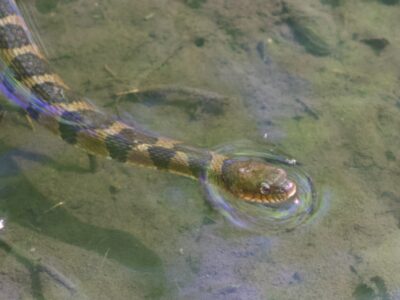
Banded Water Snake
Some water snakes defend themselves violently.
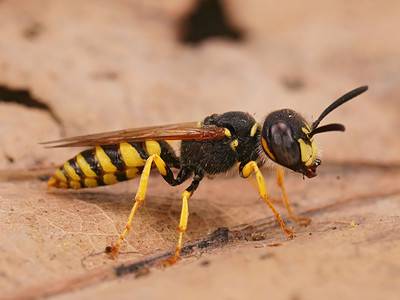
Beewolf wasp
They hunt bees
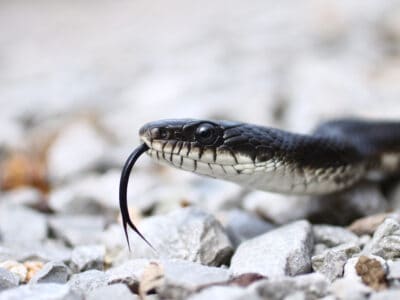
Black Rat Snake
They're also called black pilot snakes due to a myth that they "pilot" venomous snakes to a den where they can go into brumation for the winter.
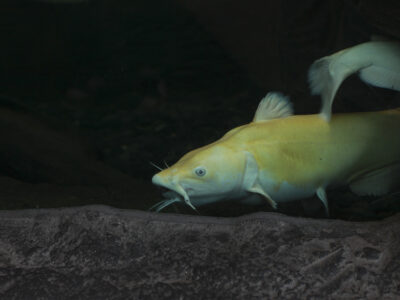
Blue Catfish
It's a strong fighter when caught on a fishing line
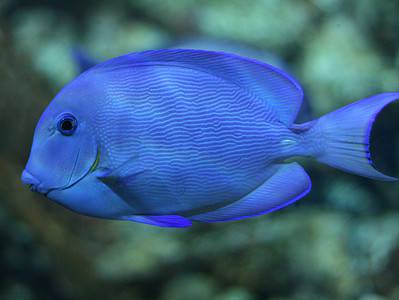
Blue Tang
One of the most colorful members of the genus Acanthurus
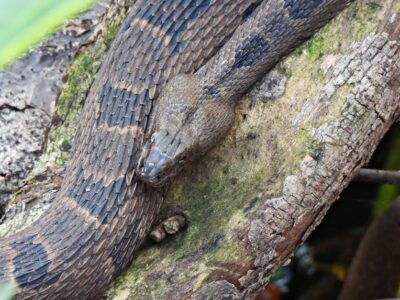
Brown Water Snake
Has more scales than any other water snake on the continent: 27 to 33 rows of dorsal scales!
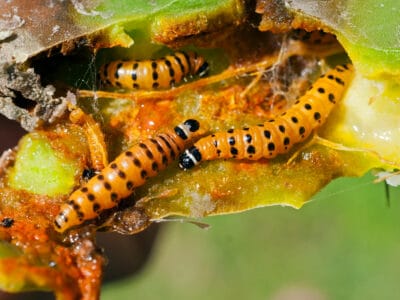
Cactus Moth
Cactus moths can cause serious damage to cacti in locations where they have no predators.
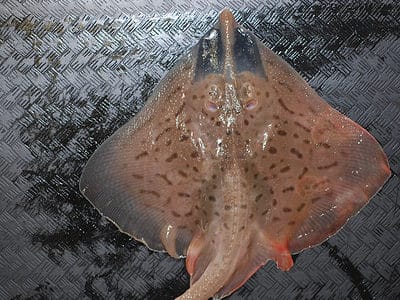
Clearnose Skate
The skate with translucent nose patches
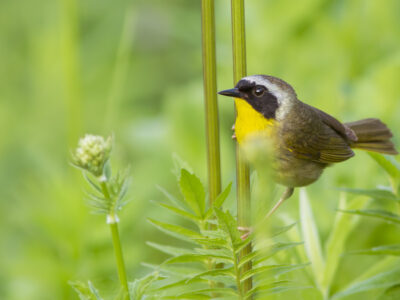
Common Yellowthroat
The Common Yellowthroat stays close to the ground and uses stealth to survive!
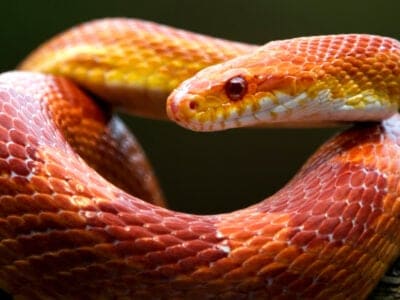
Corn Snake
Corn snakes are partly arboreal and are excellent climbers.
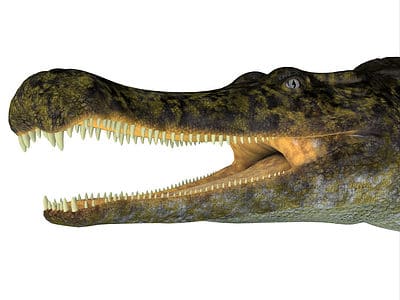
Crocodylomorph
Crocodylomorphs include extinct ancient species as well as 26 living species today.
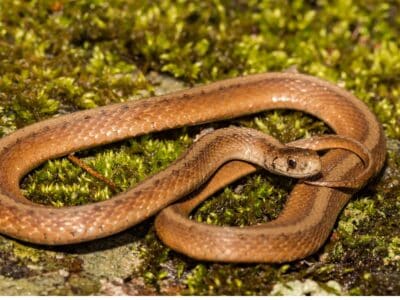
De Kay’s Brown Snake
They have specialized jaws for removing snails from shells.
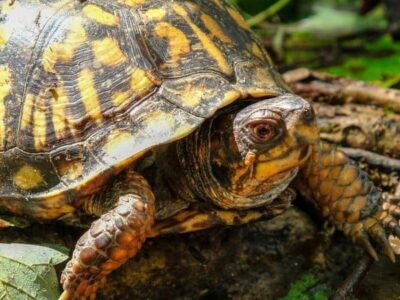
Eastern Box Turtle
When injured or damaged, the shell of the eastern box turtle can regenerate
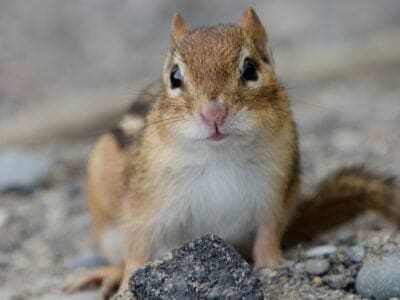
Eastern Chipmunk
The name chipmunk is derived from an Ojibwe word that means “one who descends the trees headfirst.”
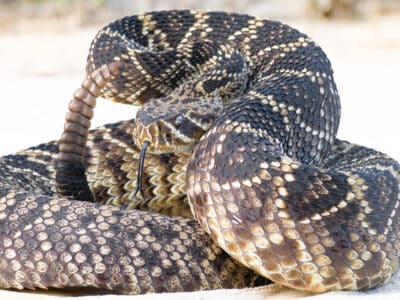
Eastern Diamondback Rattlesnake
This is the biggest venomous snake in North America, with a few that reach 8 feet long.
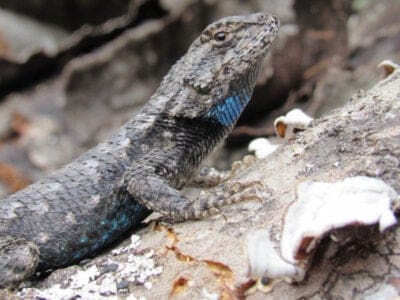
Eastern Fence Lizard
Females are usually larger than males.
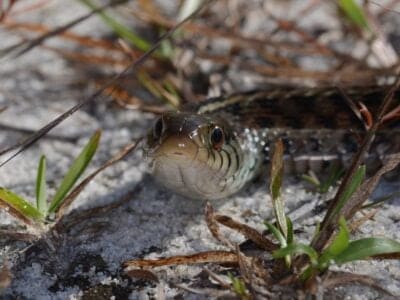
Eastern Glass Lizard
When the glass lizard loses its tail it can grow another one. But the new tail lacks the markings of the old one and is usually shorter.
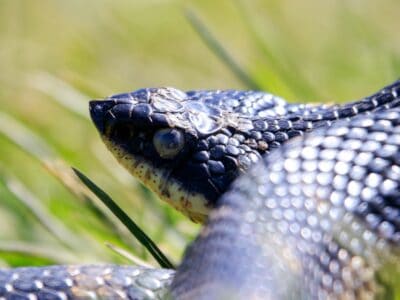
Eastern Hognose Snake
Eastern hognose snakes are venomous, but only to frogs and toads.
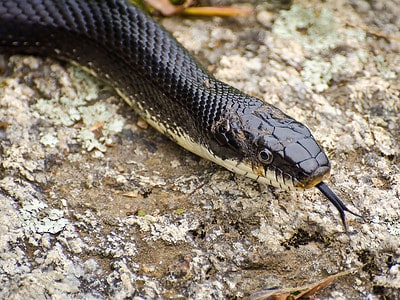
Eastern Rat Snake
Rat snakes are medium-to-large, nonvenomous snakes that kill by constriction.
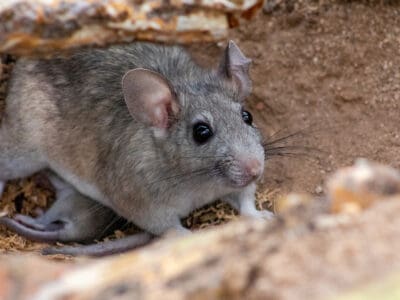
Eastern Woodrat
The eastern woodrat mating ritual involves a potentially deadly fight between the male and female before reproduction begins!
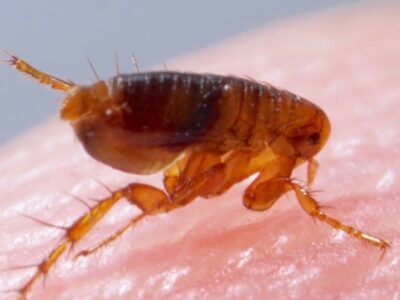
Flea
Adult fleas can jump up to 7 inches in the air
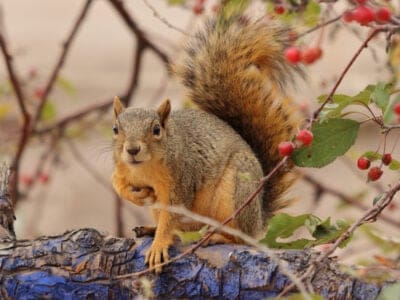
Fox Squirrel
Although it is a tree squirrel, it spends most of its time on the ground.
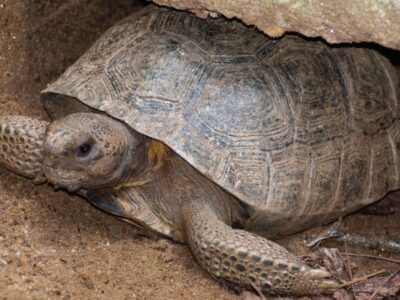
Gopher Tortoise
It is the only species of tortoise native to Florida.
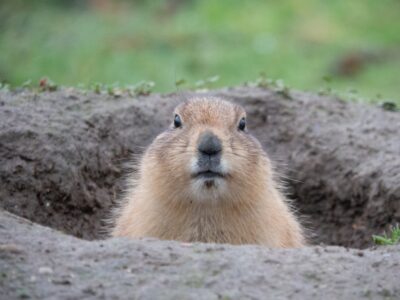
Groundhog (Woodchuck)
They whistle to each other to warn of approaching danger!
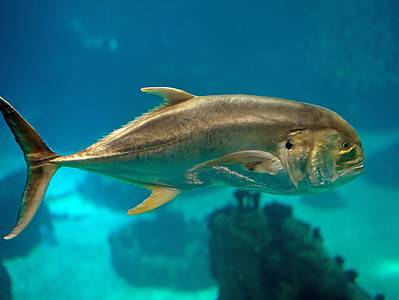
Jack Crevalle
One of the biggest species in the Caranx genus
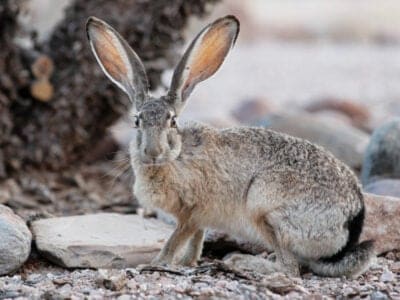
Jackrabbit
They can run as fast as 45 mph.
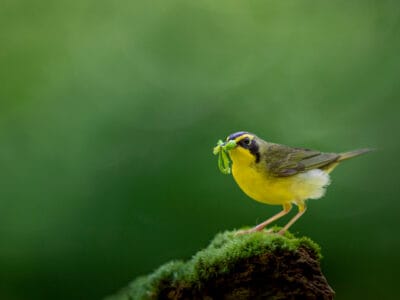
Kentucky Warbler
The Kentucky Warbler appears to wear bright yellow cat-eye glasses!
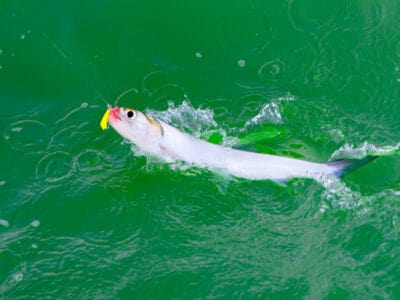
Ladyfish
Ladyfish are aggressive fighter when hooked, making them a favorite of anglers.
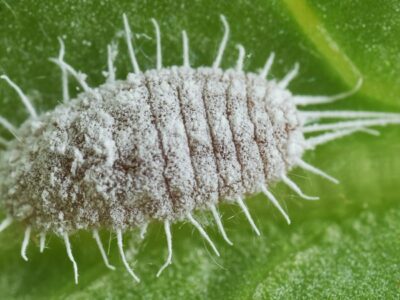
Mealybug
They have a symbiotic relationship with ants.
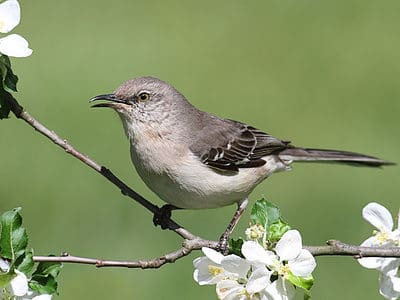
Mockingbird
Mockingbirds are incredible mimics that can learn hundreds of songs!
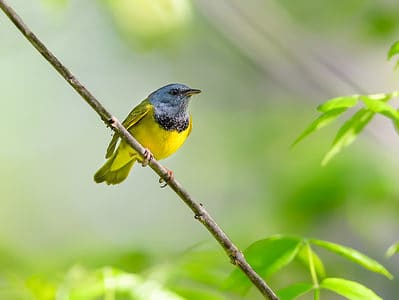
Mourning Warbler
The Mourning Warbler was named for its gray head, which resembles a mourning veil!
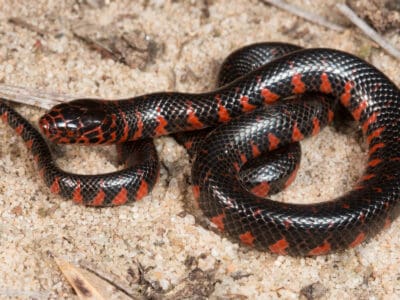
Mud Snake
Mud snakes can lay over 100 eggs at a single time!
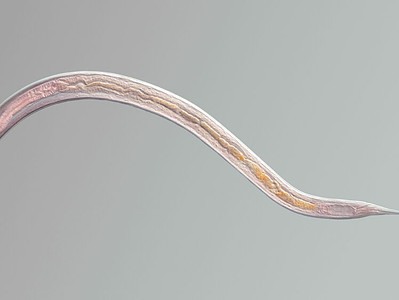
Nematode
Nematodes range in size from 1/10 of an inch to 28 feet long
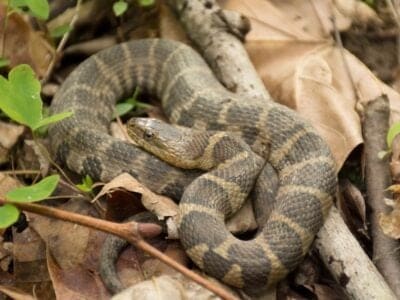
Northern Water Snake
Northern watersnakes’ teeth help them nab fish as they swim by.
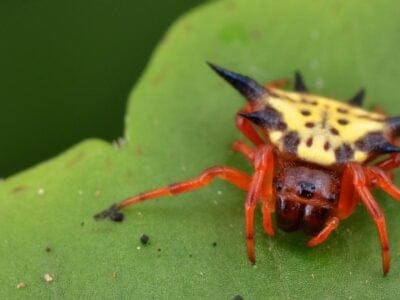
Orb Weaver
Females are about four times the size of males
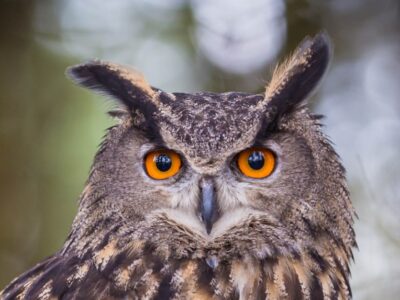
Owl
The owl can rotate its head some 270 degrees
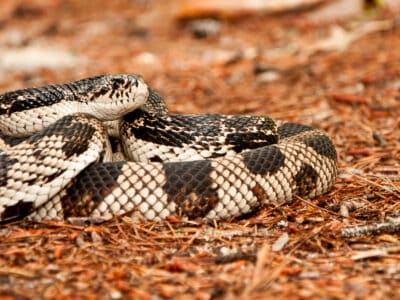
Pine Snake
Pine snakes bluff with the best, trying to scare you away.
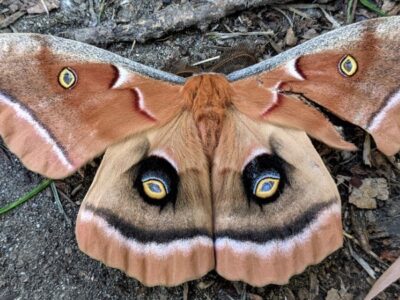
Polyphemus Moth
The Polyphemus moth doesn’t and can't eat, except when it's a caterpillar!
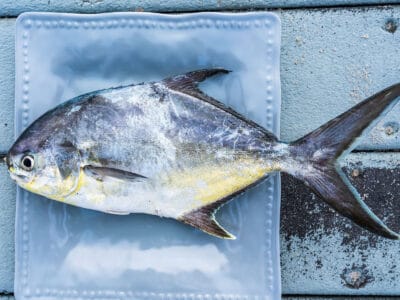
Pompano Fish
They are bottom-feeders
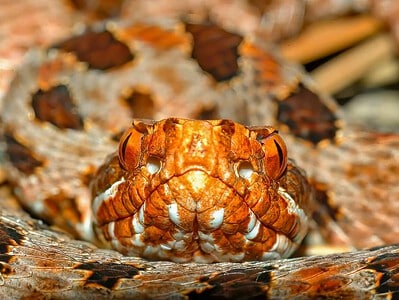
Pygmy Rattlesnake
Pygmy rattlesnakes’ rattle is so small it can only be heard from about three feet away.
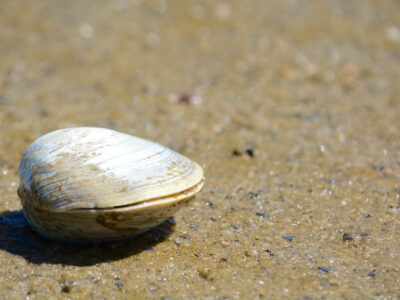
Quahog Clam
Their hinged shell protects their soft body
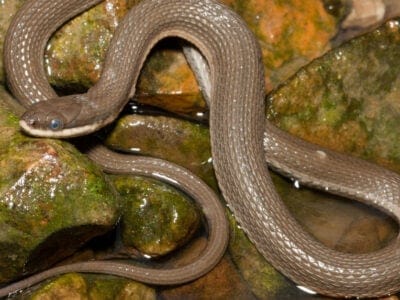
Queen Snake
Queen snakes have armor-like scales on the top of their head

Rat Snakes
Rat snakes are constrictors from the Colubridae family of snakes.
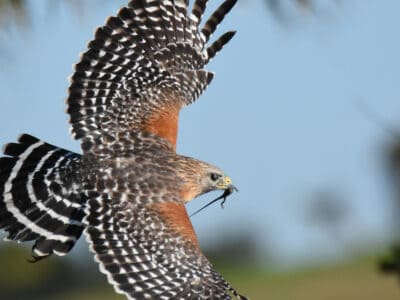
Red-Shouldered Hawk
Red-Shouldered Hawks reuse the same nesting area each year.
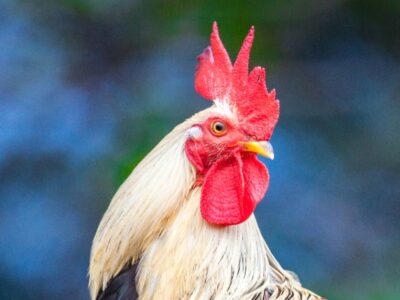
Rooster
Will mate with the entire flock!
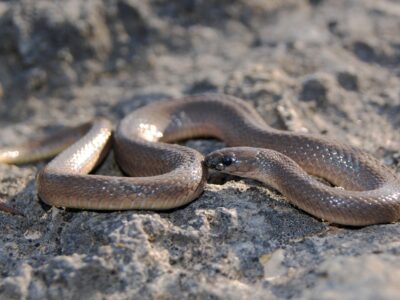
Rough Earth Snake
It has a pointed snout that is uses to burrow into moist soil.
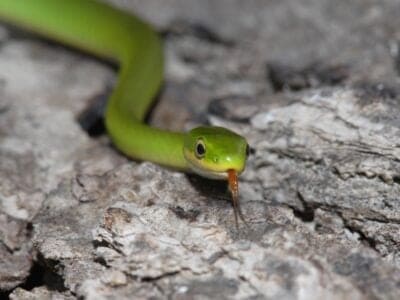
Rough Green Snake
Rough green snakes are great pet snakes because they're low-maintenance.
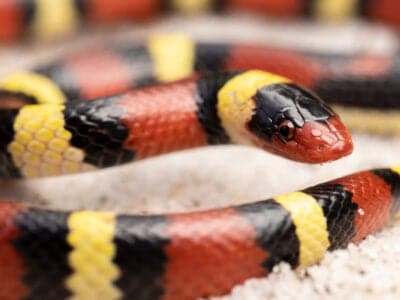
Scarlet Kingsnake
Scarlet kingsnake’s pattern is an example of Batesian mimicry.
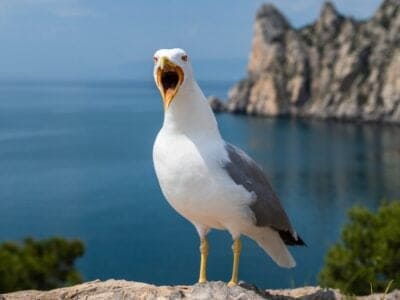
Seagull
Some gulls are capable of using tools
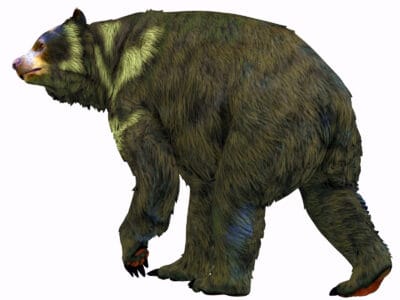
Short-Faced Bear
The modern Spectacled Bear, which lives in South America, is related to the Short-Faced Bear!
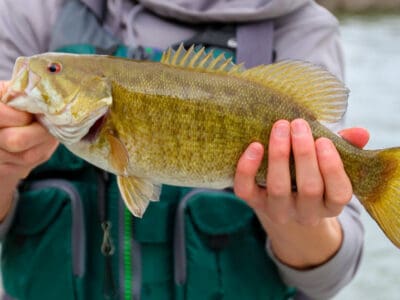
Smallmouth Bass
A fierce fighter!
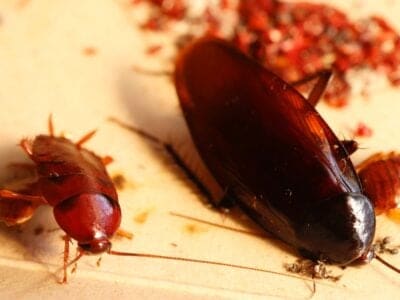
Smokybrown Cockroach
Has up to 45 eggs per egg case
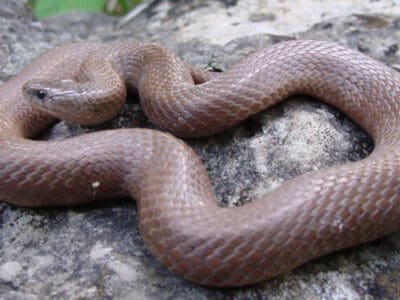
Smooth Earth Snake
Valeria Biddle Blaney (1828-1900) collected the first specimen in Maryland.
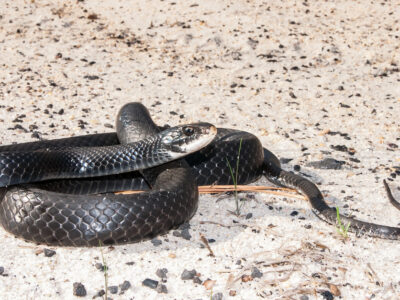
Southern Black Racer
These snakes live underground, beneath piles of leaf litter or in thickets, and they are expert swimmers.
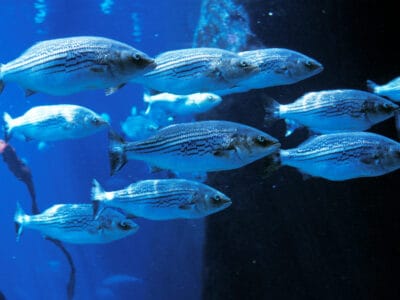
Striped Bass
Pilgrims counted striped bass as an essential part of their diet from the time they arrived in North America.
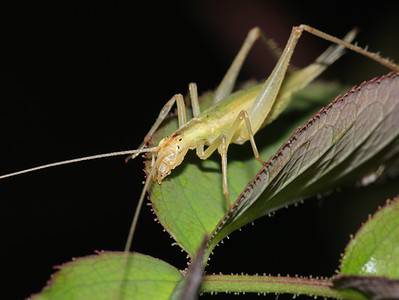
Tree Cricket
They make music with their wings
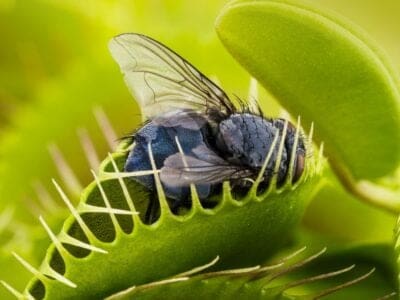
Venus Flytrap
The Venus flytrap is among a group of plants that consumes animals
South Carolinian Animals List
- Admiral Butterfly
- Agkistrodon Contortrix
- Albino (Amelanistic) Corn Snake
- Ambrosia Beetle
- American Eel
- Armyworm
- Bagworm Moth Caterpillar
- Banded Water Snake
- Beewolf wasp
- Black Rat Snake
- Blue Catfish
- Blue Tang
- Brown Water Snake
- Cactus Moth
- Clearnose Skate
- Common Yellowthroat
- Corn Snake
- Crocodylomorph
- De Kay’s Brown Snake
- Dire Wolf
- Eastern Box Turtle
- Eastern Chipmunk
- Eastern Diamondback Rattlesnake
- Eastern Fence Lizard
- Eastern Glass Lizard
- Eastern Hognose Snake
- Eastern Rat Snake
- Eastern Woodrat
- Flea
- Fox Squirrel
- Gopher Tortoise
- Groundhog (Woodchuck)
- Jack Crevalle
- Jackrabbit
- Kentucky Warbler
- Ladyfish
- Mealybug
- Milk Snake
- Mockingbird
- Mourning Warbler
- Mud Snake
- Nematode
- Northern Water Snake
- Orb Weaver
- Owl
- Pine Snake
- Pine Snake
- Polyphemus Moth
- Pompano Fish
- Pygmy Rattlesnake
- Quahog Clam
- Queen Snake
- Rat Snakes
- Red-Shouldered Hawk
- Redear Sunfish
- Rooster
- Rough Earth Snake
- Rough Green Snake
- Scarlet Kingsnake
- Seagull
- Short-Faced Bear
- Smallmouth Bass
- Smokybrown Cockroach
- Smooth Earth Snake
- Southeastern Blueberry Bee
- Southern Black Racer
- Striped Bass
- Swallowtail Butterfly
- Tree Cricket
- Venus Flytrap
Animals in South Carolina FAQs (Frequently Asked Questions)
What dangerous animals live in South Carolina?
Besides the ones listed, other dangerous animals in South Carolina include the black widow spider, the brown recluse spider, stingrays, mosquitoes, alligators and fire ants.
What animal is South Carolina known for?
The animal the state is most known for is probably the white-tailed deer, as it is everywhere.
Are there moose in South Carolina?
Some people claim to have seen a moose or two in South Carolina, but if it’s true, the moose must be one of the rarest cervids in the state. However, the state does have the next best thing to a moose which is the elk, Cervus canadensis, and its subspecies, the Rocky Mountain elk, C. c. nelsoni. Both of these elks are vagrants and were probably just passing through. If a moose, a creature of colder climes, was seen in South Carolina it is probably a vagrant as well or an escapee from a zoo.
What's the oldest city in South Carolina?
The oldest city in South Carolina is Charleston, which can trace its origin back to 1670.



